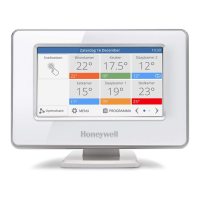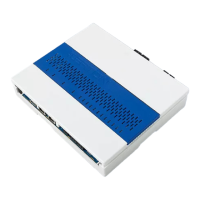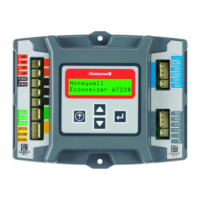ENGINEERING MANUAL OF AUTOMATIC CONTROL
CONTROL FUNDAMENTALS
31
Fig. 50. Rod-and-Tube Element.
In a remote-bulb controller (Fig. 51), a remote capsule, or
bulb, is attached to a bellows housing by a capillary. The remote
bulb is placed in the controlled medium where changes in
temperature cause changes in pressure of the fill. The capillary
transmits changes in fill pressure to the bellows housing and
the bellows expands or contracts to operate the mechanical
output to the controller. The bellows and capillary also sense
temperature, but because of their small volume compared to
the bulb, the bulb provides the control.
Fig. 51. Typical Remote-Bulb Element.
Two specialized versions of the remote bulb controller are
available. They both have no bulb and use a long capillary (15
to 28 feet) as the sensor. One uses an averaging sensor that is
liquid filled and averages the temperature over the full length
of the capillary. The other uses a cold spot or low temperature
sensor and is vapor filled and senses the coldest spot (12 inches
or more) along its length.
Electronic temperature controllers use low-mass sensing
elements that respond quickly to changes in the controlled
condition. A signal sent by the sensor is relatively weak, but is
amplified to a usable strength by an electronic circuit.
The temperature sensor for an electronic controller may be
a length of wire or a thin metallic film (called a resistance
temperature device or RTD) or a thermistor. Both types of
resistance elements change electrical resistance as temperature
changes. The wire increases resistance as its temperature
increases. The thermistor is a semiconductor that decreases in
resistance as the temperature increases.
Because electronic sensors use extremely low mass, they
respond to temperature changes more rapidly than bimetal or
sealed-fluid sensors. The resistance change is detected by a
bridge circuit. Nickel “A”, BALCO, and platinum are typical
materials used for this type of sensor.
In thermocouple temperature-sensing elements, two
dissimilar metals (e.g., iron and nickel, copper and constantan,
iron and constantan) are welded together. The junction of the
two metals produces a small voltage when exposed to heat.
Connecting two such junctions in series doubles the generated
voltage. Thermocouples are used primarily for high-
temperature applications.
Many special application sensors are available, including
carbon dioxide sensors and photoelectric sensors used in
security, lighting control, and boiler flame safeguard
controllers.
PRESSURE SENSING ELEMENTS
Pressure sensing elements respond to pressure relative to a
perfect vacuum (absolute pressure sensors), atmospheric
pressure (gage pressure sensors), or a second system pressure
(differential pressure sensors), such as across a coil or filter.
Pressure sensors measure pressure in a gas or liquid in pounds
per square inch (psi). Low pressures are typically measured in
inches of water. Pressure can be generated by a fan, a pump or
compressor, a boiler, or other means.
Pressure controllers use bellows, diaphragms, and a number
of other electronic pressure sensitive devices. The medium
under pressure is transmitted directly to the device, and the
movement of the pressure sensitive device operates the
mechanism of a pneumatic or electric switching controller.
Variations of the pressure control sensors measure rate of flow,
quantity of flow, liquid level, and static pressure. Solid state
sensors may use the piezoresistive effect in which increased
pressure on silicon crystals causes resistive changes in the
crystals.
FLAPPER
SPRING
SIGNAL PORT
BRASS TUBE
INVAR ROD
EXTENSION SPRING
SENSOR BODY
C2081
MECHANICAL OUTPUT
TO CONTROLLER
BELLOWS
LIQUID
FILL
CAPILLARY
CONTROLLED
MEDIUM
(E.G., WATER)
BULB
C2083

